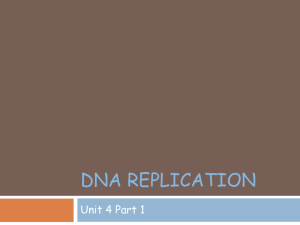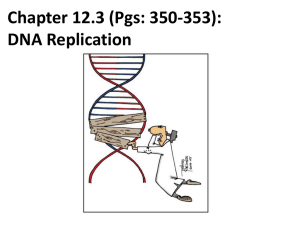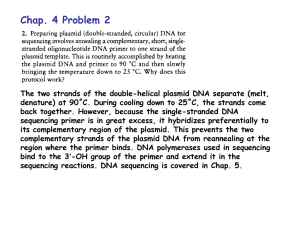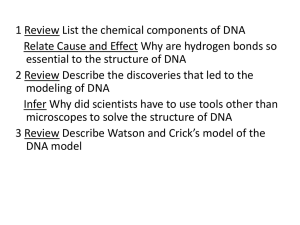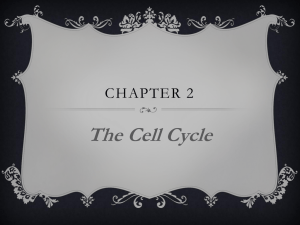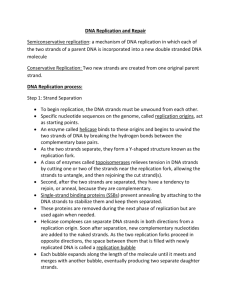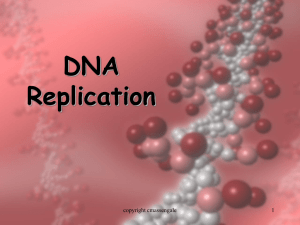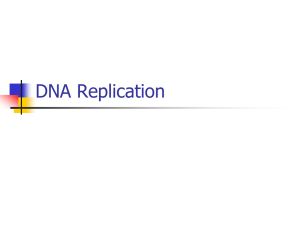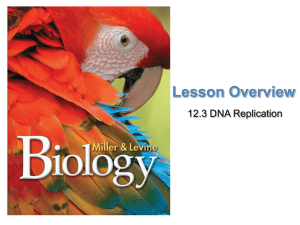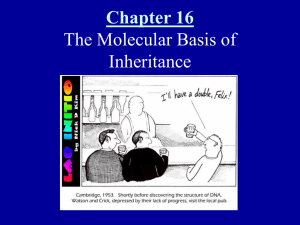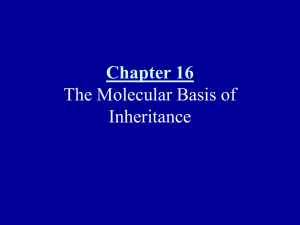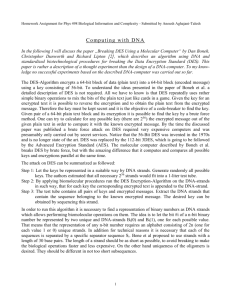DNA and Protein Synthesis Notes
advertisement
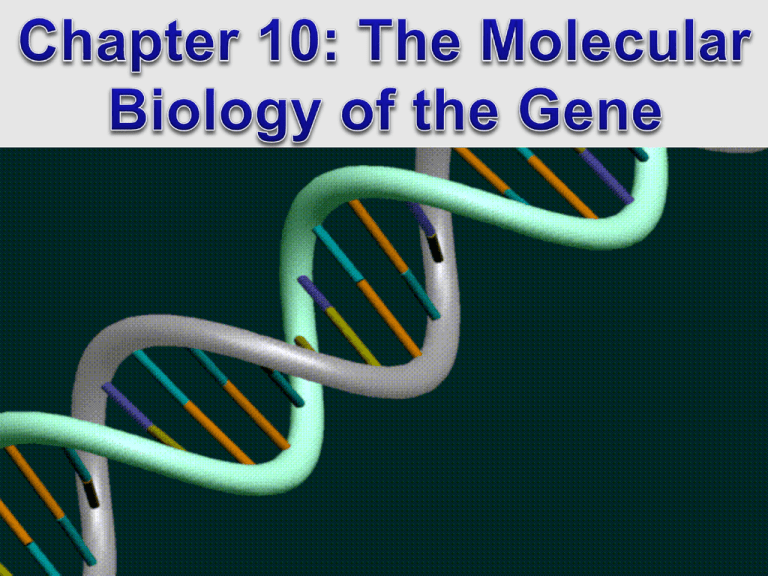
How did they know that DNA was the molecule that was inherited? I. DNA = Deoxyribonucleic Acid A. Basic unit is a nucleotide Phosphate group Nitrogen Base 5 carbon sugar: deoxyribose B. Stores information to make proteins C. Structure: 1. Phosphate-sugar backbone 2. Double stranded a. The two strands run in opposite directions, they are said to be “anti-parallel” Double Helix Antiparallel Double Strands Showing the anti-parallel double strands 3. A twisted Helix shape (like a phone cord) 4. Discovered by James Watson and Francis Crick in 1953 a. received Nobel prize along with Maurice Wilkins b. Rosalind Franklin also contributed, but died before Nobel Prize was given 5. Nitrogen bases are held together by weak Hydrogen bonds a. Purines: Adenine (A) Guanine (G) b. Pyrimidines: Cytosine (C) Thymine (T) c. Purines always pair with pyrimidines A – T and G – C 6. Erwin Chargaff a. knew components of DNA, not structure b. analyzed base components of different organisms c. amounts of bases vary, but are present in a characteristic ratio. Adenines = Thymines Guanines = Cytosines in humans A = 30.9% T = 29.4% G = 19.9% C = 19.8% 6. In all cells of the human body, the DNA strand is approximately 3m (3 billion bases) long and is broken into 46 pieces. These pieces are called “chromosomes” 7. The strands are coiled tightly around proteins called “histones” II. DNA Replication “ It has not escaped our notice that the specific pairing we have postulated immediately suggests a possible coupling mechanism for the genetic material” –Watson and Crick A. Meselson-Stahl experiment: 1. Tested three hypotheses for DNA replication. What data would look like with different densities. If conservative, then: Parent: 1st rep: Centrifuge results: 2nd rep: Centrifuge results: If semiconservative, then If dispersive, then Conclusion: Semiconservative B. Why is DNA replication so important? 1. So new cells have an exact copy of the old cell’s DNA C. When does replication occur? 2. Before the cell divides D. Process: 1. An enzyme called “DNA Helicase” attaches to DNA strand and breaks the hydrogen bonds between A/T and C/G 2. An enzyme “DNA polymerase” attaches free floating bases to the single DNA strand 3. The result is two identical strands of DNA 4. This occurs at the same time at different parts of the DNA strand because it is so long a. you see “Replication Bubbles” all along the strand. 5. DNA polymerase can only add bases to a free 3’ end, therefore the daughter strand is always built in the 5’ to 3’ direction. 6. At every replication fork, both DNA strands are being replicated a. Leading strand – DNA polymerase moves along the strand in the direction of replication b. Lagging strand – DNA polymerase moves against the direction of replication and has to build fragments that will be joined later (“Okazaki fragments”) DNA ligase joins the fragments together 7. Errors do occur: 1 error per billion nucleotides a. DNA polymerase goes back to check mistakes 8. How long does this take? Approximately 50 nucleotides per second

